Computer Brief History
Introduction To Computer Accounting > Basic Computing
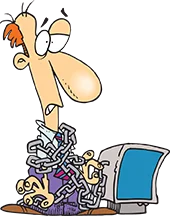
Computers Brief History
It's amazing how far we've come with computer technology. I've tried to be brief and list some of the milestones we've accomplished just so you can see how far we've come and where we are at now.
Hardware
Computers
The Apple II was one of the world's first highly successful mass-produced microcomputer. It was designed primarily by Steve Wozniak. It was introduced by Jobs and Wozniak at the 1977 West Coast Computer Faire, and marks Apple's first launch of a personal computer aimed at a consumer market—branded toward American households rather than businessmen or computer hobbyists.
The IBM Personal Computer (commonly known as the IBM PC) released in 1981 was the first microcomputer released in the IBM PC model line and the basis for the IBM PC compatible de facto standard. The PC had a substantial influence on the personal computer market. The specifications of the IBM PC became one of the most popular computer design standards in the world. The only significant competition it faced from a non-compatible platform throughout the 1980s was from the Apple Macintosh product line. The majority of modern personal computers are distant descendants of the IBM PC.
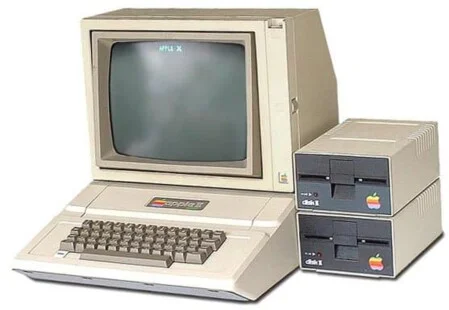
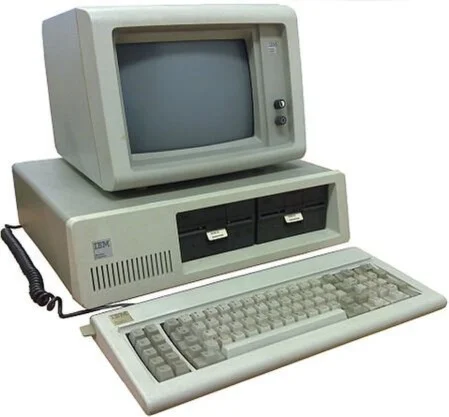
Other notables during the early years were Commodore, Atari, and Radio Shack computers.
Due to the success of the IBM PC, many manufacturers introduced machines based on the IBM PC design (clones). IBM PC compatible computers were similar to the original IBM PC and were able to use the same software and expansion cards. Such computers were referred to as PC clones, IBM clones or IBM PC clones. The term "IBM PC compatible" is now a historical description only, since IBM no longer sells personal computers.
Some notable clones produced you might recognize are Gateway, Compaq, Dell, and Hewlett Packard.
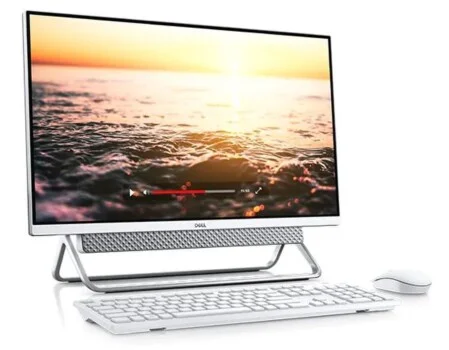

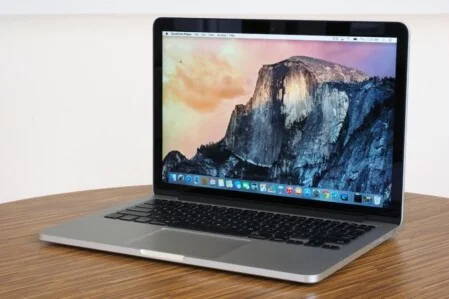
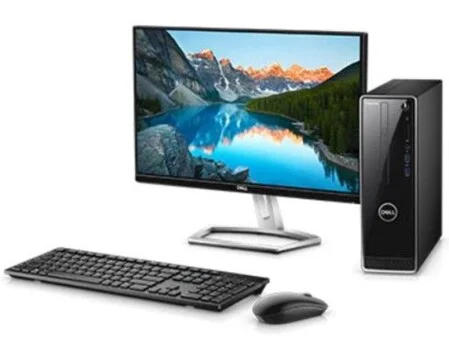
Our current day computers have come a long way ! They are faster, more compact, and have huge memories. Pictured above are a desktop computer with what I call the "big box", the actual computer. An all-in-one computer where all the computer components (actual computer) are contained in the monitor (screen). The other two computers pictured are lap tops. The first two pictured computers are what I called "fixed" since they are a pain in the you know what to move to other locations. The last two pictured computer laptops give you the freedom to take them wherever you want.
Some current computer brands are Dell, Lenova, Apple, Hewlett-Packard, Toshiba, Samsung, Microsoft, Acer, and Google.
Pictured below are some of the "computers" from the ole days. In my day, I thought calculators were the best thing since sliced bread ! No, I'm not that old, I wasn't around for the abacus (the machine with the beads).
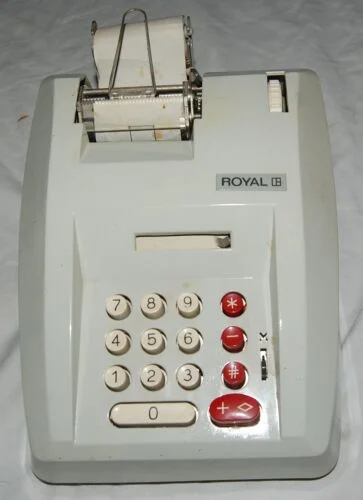
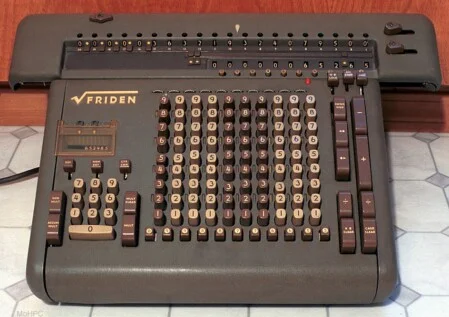
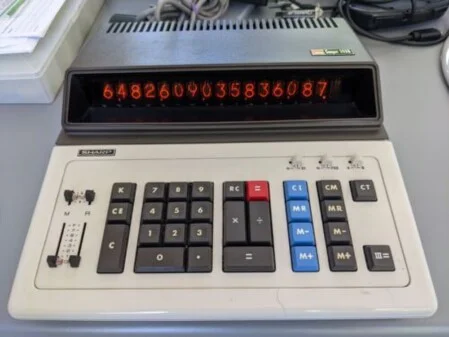
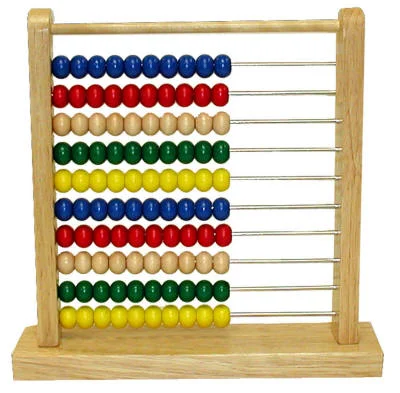
System Software
Operating Systems
PCs Operating Systems
Before Microsoft and Intel dominated the PC market with a common platform, the CP/M operating system did something similar for small business machines in the late 1970s and early 1980s—until MS-DOS pulled the rug out from under it.
The Disk Operating System (DOS) was developed as a joint project between IBM and Microsoft.
Microsoft's MS-DOS was the main operating system for IBM PC (clones) compatibles during the 1980s, from which point it was gradually superseded by operating systems offering a graphical user interface (GUI), in various generations of the graphical Microsoft Windows operating system.
IBM licensed and re-released their DOS operating system in 1981 as PC DOS 1.0 for use in their own IBM personal computers (PCs).
Although MS-DOS and PC DOS were initially developed in parallel by Microsoft and IBM, the two products diverged after twelve years, in 1993, with recognizable differences in compatibility, syntax, and capabilities
Microsoft introduced an operating environment named Windows on November 20, 1985, as a graphical operating system shell for MS-DOS in response to the growing interest in graphical user interfaces (GUIs). The Windows operating system is still active and on PCs the most popular operating system in all countries.
Apple & Mac Operating Systems
Apple DOS was the family of disk operating systems for the Apple II series of microcomputers from late 1978 through early 1983.
Macintosh Operating Systems
In 1984, Apple debuted the operating system that is now known as the "Classic" Mac OS with its release of the original Macintosh System Software.
The current Mac operating system is macOS, developed between 1997 and 2001 was originally named "Mac OS X" until 2012 and then "OS X" until 2016. The current macOS as of 2023 is macOS Ventura and is pre-installed with every Mac and receives a major update annually.
Application Software
The Big 3 Applications
Word Processing, Spreadsheets, Data Base Management
In my early days (80's), if you had these three applications you were way ahead of the "curve".
Word Processing
Word Processing is software used to create, edit, save and print documents. Text can be inserted, edited, moved, copied or deleted within your document and the appearance of the text can be modified in numerous ways. Most word processing apps also give you the ability to check your spelling and grammar and many have built in dictionaries and other tools to assist you in your writing.
WordStar
The 3.0 version of WordStar for DOS was released in 1982. Within three years, WordStar was the most popular word processing software in the world. However, by the late 1980s, programs like WordPerfect knocked Wordstar out of the word processing market after the poor performance of WordStar 2000.
Wordperfect
WordPerfect (WP) is a word processing application, now owned by Corl, with a long history on multiple personal computer platforms. At the height of its popularity in the 1980s and early 1990s, it was the dominant player in the word processor market, displacing the prior market leader WordStar. Although Microsoft Word has made a big dent, WordPerfect is still alive and kicking. It still remains a popular choice with the legal profession.
Word
Microsoft Word is a word processing software developed by Microsoft. It was first released on October 25, 1983. Current versions of Word are licensed as a standalone product or as a component of Microsoft Office suite. Due to its immense popularity, Word is the preferred choice for most schools, businesses and companies.
Spreadsheets
A spreadsheet is software that allows you to store, manipulate and analyze data. Data in a spreadsheet is organized in a series of rows and columns and can be searched, sorted, calculated and used in a variety of charts and graphs. The true power of the spreadsheet is its ability to handle complex mathematical calculations and automatically recalculate totals as the underlying data in the sheet changes. This is especially useful for "What-if" analysis and forecasting.
VisiCalc
VisiCalc is the first spreadsheet computer program for personal computers, originally released for Apple II by VisiCorp in 1979. It is often considered the application that turned the microcomputer from a hobby for computer enthusiasts into a serious business tool, prompting IBM to introduce the IBM PC two years later.
VisiCalc is considered to be Apple II's killer app. It sold over 700,000 copies in six years, and as many as 1 million copies over its history.
Lotus 1-2-3
When Lotus 1-2-3 was launched in 1983, taking full advantage of the expanded memory and screen of the PC, VisiCalc sales ended almost overnight. Sales declined so rapidly, that the company was soon insolvent. Lotus Development purchased the company in 1985 and immediately ended sales of VisiCalc.Lotus 1-2-3 is a discontinued spreadsheet program from Lotus Software (later part of IBM). It was the first killer application of the IBM PC, was hugely popular in the 1980s, and significantly contributed
to the success of IBM PC-compatibles. Lotus 1-2-3 was the spreadsheet standard throughout the 1980s and into the 1990s. Lotus was surpassed by Microsoft (Excel) in the early 1990s, and never recovered.
Excel
Microsoft Excel, a spreadsheet program developed by Microsoft, has been around since 1982, first introduced as Multiplan, a very popular CP/M (Control Program for Microcomputers), but lost popularity on MS-DOS systems to Lotus 1-2-3. They have since replaced Lotus-1-2-3 and are currently the most familiar, flexible, and widely used spreadsheet application in the world due to its capability to adapt to almost any business process.
Other Software
Presentation Software
Presentation software is defined as computer programs (apps) designed to allow the user to present information in an engaging way such as with text, pictures, sound and video. One of the leaders in this field is Microsoft with their PowerPoint app.
PowerPoint
Microsoft PowerPoint is a presentation program, created by Robert Gaskins and Dennis Austin at a software company named Forethought, Inc. It was released on April 20, 1987, initially for Macintosh computers only. Microsoft acquired PowerPoint for about $14 million three months after it appeared. Guess they knew a good deal when they saw one.
Office Suites
An Office Suite is a collection or bundle of applications and usually consist of at least a Word Processor, Spreadsheet, and Presentation app.
Microsoft's first office suite was released in 1990 and included Word, Excel, and PowerPoint. THe office suite evolved into Office 365 and is currently called Microsoft 365 released in early 2020. It appears Microsoft is moving in the direction of using a subscription and the "Cloud" to utilize their current product offering.
Major Applications Included:
- Word-Word Processing
- Excel-Spreadsheets
- PowerPoint-Presentations
- Outlook-Email
- One Drive - "Cloud" Storage
Libre Office
LibreOffice is a powerful and free office suite, a successor to OpenOffice(.org), used by millions of people around the world. The Document Foundation took over the app, and it became LibreOffice in 2010.
Its clean interface and feature-rich tools help you unleash your creativity and enhance your productivity.
LibreOffice includes several applications that make it the most versatile Free and Open Source office suite on the market:
- Writer (word processing)
- Calc (spreadsheets)
- Impress (presentations)
- Draw (vector graphics and flowcharts)
- Base (databases)
- Math (formula editing)
Programming Database Management Software
dBase/Clipper
dBase was one of the first database management systems for microcomputers and the most successful in its day.
The dBase system included the core database engine, a query system, a forms engine, and a programming language that ties all of these components together.
dBase's underlying file format, the .dbf file, was widely used in applications needing a simple format to store structured data.
Originally released as Vulcan for PTDOS in 1978, the CP/M port caught the attention of Ashton-Tate in 1980. They licensed it and re-released it as dBASE II, and later ported to Apple II and IBM PC computers running DOS. On the PC platform, in particular, dBase became one of the best-selling software titles for a number of years. A major upgrade was released as dBase III, and ported to a wider variety of platforms.
By the mid-1980s, Ashton-Tate (dBase) was one of the "big three" software publishers in the early business software market, the others being Lotus Development and WordPerfect.
Clipper was created as a replacement programming language for Ashton Tate's dBASE III, a very popular database language at the time. The advantage of Clipper over dBASE was that it could be compiled and executed under MS-DOS as a standalone application. In the years between 1985 and 1992, millions of Clipper applications were built, typically for small businesses dealing with databases concerning many aspects of client management and inventory management. For many smaller businesses, having a Clipper application designed to their specific needs was their first experience with software development.
Spinoffs
Starting in the mid-1980s, several companies produced their own variations on the dBase product and especially the dBase programming language. These included FoxBASE+ (later renamed FoxPro), Clipper, and other so-called xBase products. In the early 1990s, xBase products constituted the leading database platform for implementing business applications. By the opening decade of the 21st century, most of the original xBase products had faded from prominence and many disappeared entirely.
Accounting and Bookkeeping Software
Accounting and bookkeeping software is an accounting information system that processes the financial transactions and events as per Generally Accepted Accounting Principles (GAAP) to produce reports per user requirements utilzing hardware and software to accomplish this task. Software dedicated to bookkeeping first appeared in the 1970s.
Peachtree
Peachtree was an early entry and introduced an accounting software package in 1978- it is now called Sage.
DacEasy Accounting
DacEasy was launched in 1985 and was the first company to offer affordable accounting software geared towards the small business. It had gone through many DOS revisions at the time the Windows 1.0 version was released. Later versions of DacEasy included options for networks and especially it's POS (Point Of Sale) cash register software. This program was designed to follow the GAAP (Generally Accepted Accounting Principals).This program included the General Ledger, Accounts Receivable, Payroll, Cash Manager, Invoicing, Purchase Order, Inventory, Fixed Assets, and Budgeting Early version were available for IBM PC, Atari, and Apple II computers. Later versions were produced for Microsoft Windows.
Quickbooks
QuickBooks is a well known accounting software package developed and marketed by Intuit. First introduced in 1983, QuickBooks products are geared mainly toward small and medium-sized businesses and offer on-premises accounting applications as well as cloud-based versions that accept business payments, manage and pay bills, and payroll functions.
QuickBooks is the accounting software of choice for more than 29 million small businesses in the U.S. They have the largest market share for accounting software and have a diverse product offering suited to help both small businesses (QuickBooks Online) and larger growing companies (QuickBooks Enterprise) and everything in between (QuickBooks Pro, QuickBooks Premier).
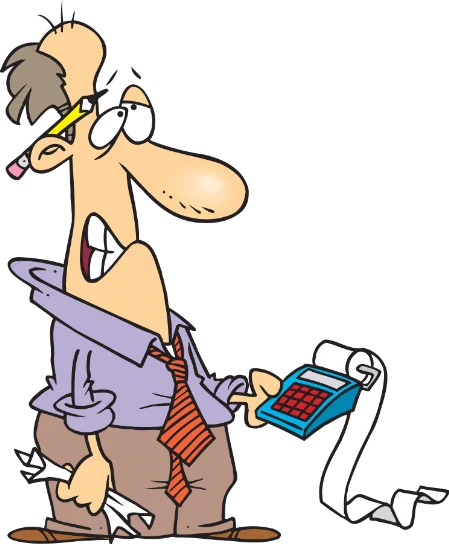
My Own History
About the time that the original IBM-Pc was released 1982 I realized I did not want to become an obsolete accountant. I purchased an IBM-Pc and added on an external 20mb hard drive. I also purchased accounting and office related software. Some of the early products that I purchased and used were spreadsheets VisiCalc and Lotus-1-2-3.
I also bought WordPerfect as my word processing software. I then decided that I wanted to write my own programs so I purchased dBase and Clipper. If you recall, earlier I said you had things covered if you had the Big 3 Applications, namely, a wordprocessor, spreadsheet, and database management.
My total amount invested was approximately $6,000 for the hardware and software. I could have bought a car. Getting the hardware and software was great;but, now I needed to invest my time in learning all the software otherwise my original investment would have been wasted. I was self taught on how to use the applications and how to actually use dBase and Clipper to write programs. Bean Counter was the bookkeeping and accounting program that I wrote.
Accounting and bookkeeping programs I used in the early days included Dac Easy Accounting and Peachtree. I never have been a fan of Quickbooks even though it has become a widely used program.
Bean Counter
I know you never heard of it. I didn't like the early versions of the bookkeeping software offered and so developed my own software called Bean Counter which was a DOS based accounting software written back in the 90's using dBASE and Clipper.
Free Software
Believe it or not there are some "free lunches". As time has passed I've kept up with the Office Suites and some of the new Bookkeeping Software mainly the free stuff. A few you might want to check out follow:
Libre Office- is a free office suite similar to Microsoft's Office Suite.
Manager Accounting - is free accounting software for small business. Available for Windows, Mac and Linux. It's free, works offline and it's cross-platform.
Adminsoft Accounts - is free accounting software for your personal computer, with support for both small and medium business and home accounting.
BS1 Accounting - is a full-featured business system.
Some of the brands of computers desktops and laptops that I've purchased over the years are IBM, Hewlett-Packard, Dell, and Toshiba.
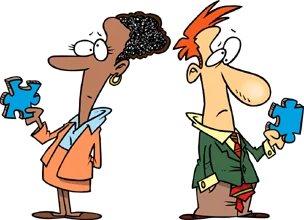
Windows or Apple ?
Buying a new computer? Windows is still probably the most used and popular, but Apple is a great choice for creative professionals.
Windows is the most familiar operating system to most users. The advantage of Windows is that is has a very broad range of software available. All kinds of software is available for Windows, from business software to home computing apps.
A preferred operating system among creative professionals is macOS. Unlike Windows, which you can install on most PC hardware, macOS is generally only available on Mac hardware. The advantage of macOS is its exceptional support for creative software such as Adobe Photoshop or Premier. The disadvantage of macOS is that Apple hardware can be expensive, with laptops and desktops costing thousands of dollars. There's also much less free software available for macOS than other operating systems,
so be prepared to spend more on software too.
My choice ?
While software suppliers have currently been providing software versions for both Windows and Mac operating sytems and offering the software on the internet (the cloud), due to the software that was available in the past and is still available now for Windows, my choice has always been Windows.
Summary
Computer popularity started in the 80's and here we are now with most of us carrying around a computer in our pocket-our phone.
